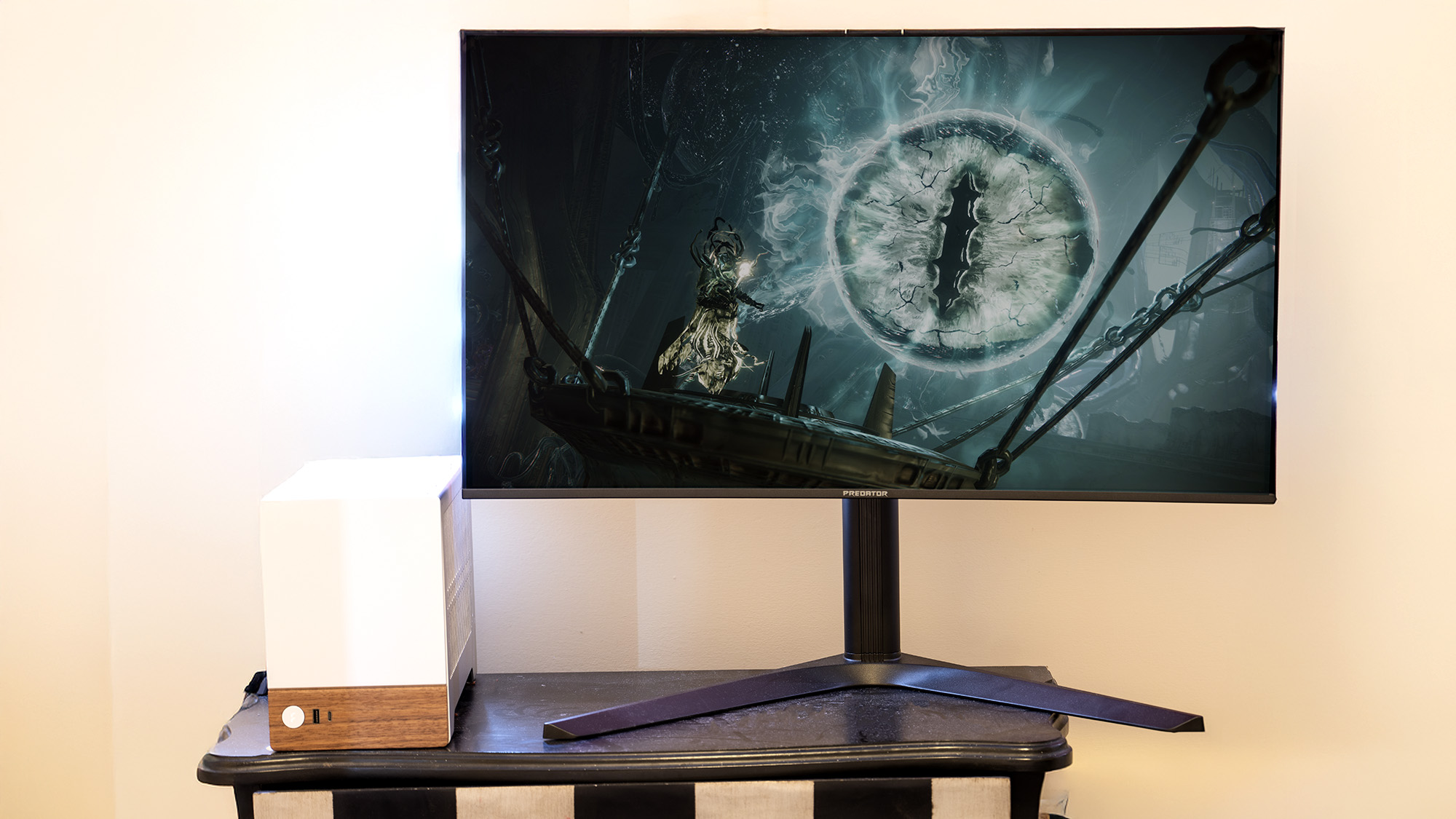Nvidia's DLSS AI transformer model is now out of beta so we might see more games get patched to make use of it
Don't forget that it will also work on any GeForce RTX GPU, not just the latest ones.

While it's fair to say that Nvidia's RTX 50-series of graphics cards might not go down in history as the greatest lineup of GPUs ever created, the release of DLSS 4 has been far more warmly received. This latest collection of AI-powered upscaling, frame generation, and ray tracing denoiser technologies is the best yet, though one element of it has been in beta form only. Well, not anymore, as the new DLSS SDK now lets anyone use Nvidia's transformer model.
If you have no idea what that actually is, let me give you a brief rundown as to how DLSS upscaling works. To improve the performance of games, programmers can implement a section of code that activates DLSS during the rendering of a frame. It drops the resolution right down, making the shading stage much quicker to process.
Once that's all done, the frame is then scaled back to the resolution it needs to be for the monitor. That's super quick and easy to do, but it often produces small artefacts in the frame, so before the upscaled frame can be rendered further, your GeForce RTX GPU runs a neural network on the image to tidy it up.
In DLSS 2, 3, and 3.5, that network uses what is known as a convolutional neural network or CNN. After six years of developing said network, Nvidia had reached the limits of quality and performance that it could offer, so for DLSS 4 upscaling, DLAA, and Ray Reconstruction, it created a so-called vision transformer (ViT) model.
It's more complex than the previous CNN, but due to having twice as many parameters (think of these as 'control knobs' for the model), the new ViT can produce a better quality output. It is more work for the GPU to process, though, but one can't have everything.
Anyway, although the option to use the Transformer model was added to some games, such as Cyberpunk 2077, very quickly, it's officially been in beta form since launch.
However, as spotted by Videocardz, the latest DLSS SDK 310.3.0 (software development kit) on GitHub highlights the fact that it's now out of beta. That doesn't mean Nvidia has stopped improving the model; it's just saying that it believes it's ready for widespread use by any developer.
Keep up to date with the most important stories and the best deals, as picked by the PC Gamer team.
I'm not expecting every future game that supports DLSS to automatically offer the Transformer model as an option, as Cyberpunk 2077 does, nor that they will use it by default, but it does mean that developers now have the option to implement it.
More importantly, we might also see current games get patched to give us the choice of faster upscaling or slightly slower upscaling, with a better output. Or better, ray tracing denoising, for that matter.
Whatever one thinks about Nvidia and the RTX 50-series, DLSS 4 is seriously impressive stuff, and with regards to the transformer model, at least it can be used on any RTX graphics card.

1. Best overall: MSI MPG 321URX
2. Best 4K: LG Ultragear 27GR93U
3. Best budget 4K: Gigabyte M28U
4. Best 1440p: Xiaomi G Pro 27i
5. Best budget 1440p: Pixio PXC277 Advanced
6. Best budget 1080p: AOC Gaming C27G4ZXE
7. Best Ultrawide: Asus ROG Swift OLED PG34WCDM
8. Best 32:9: Samsung Odyssey OLED G9
9. Best budget ultrawide: ASRock Phantom PG34WQ15R2B
10. Best WOLED: LG Ultragear 32GS95UE
11. Best 1440p OLED: MSI MPG 271QRX
12. Best budget OLED ultrawide: Alienware 34 QD-OLED
13. Best dual-mode: Alienware AW2725QF

Nick, gaming, and computers all first met in 1981, with the love affair starting on a Sinclair ZX81 in kit form and a book on ZX Basic. He ended up becoming a physics and IT teacher, but by the late 1990s decided it was time to cut his teeth writing for a long defunct UK tech site. He went on to do the same at Madonion, helping to write the help files for 3DMark and PCMark. After a short stint working at Beyond3D.com, Nick joined Futuremark (MadOnion rebranded) full-time, as editor-in-chief for its gaming and hardware section, YouGamers. After the site shutdown, he became an engineering and computing lecturer for many years, but missed the writing bug. Cue four years at TechSpot.com and over 100 long articles on anything and everything. He freely admits to being far too obsessed with GPUs and open world grindy RPGs, but who isn't these days?
You must confirm your public display name before commenting
Please logout and then login again, you will then be prompted to enter your display name.


